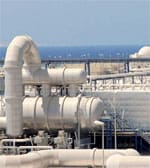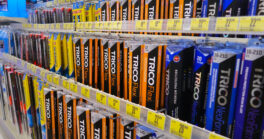Determined to avoid repeating past mistakes, oil-rich nations in the Middle East have worked hard to diversify their economies. So far they have fared well, but pitfalls remain.
 |
|
|
With so much liquidity sitting in local government coffers, the countries of the Gulf Cooperation Council (GCC) are in the enviable position of not having to rely on foreign capital inflows to help prop up their economies. And if local banks find themselves in a spot of bother, then governments in the region are only too willing to lend a helping hand, as was the case in late October when the Central Bank of Kuwait stepped in to support the financial position of Gulf Bank, which sustained substantial losses on a currency derivative trade. The UAE also has sufficient surpluses and assets to cover Dubai’s mounting debt, which is estimated to be $47 billion.
The Middle East has an additional liquidity buffer in the form of sovereign wealth funds (SWF). The Abu Dhabi Investment Authority is the largest SWF in the world. “In the downturn, SWFs have become increasingly important,” notes Gabriel Stein, chief international economist for UK-based Lombard Street Research. “They are a huge buffer, which will help [the region] survive current problems.”
Middle East SWFs are also likely to play an enlarged role in the global financial recovery, with the UK’s Barclays Bank receiving a £5.8 billion cash injection from Qatar and Abu Dhabi investors in late October. Yet despite Western governments’ pleas for commodity-rich countries to pump more money into the IMF’s coffers, SWFs in the region may have different ideas as to how they want to invest their money, and some may want to keep liquidity closer to home.
Wrinkles Remain
Yet, Dauba-Pantanacce says, there are two sides to the liquidity story in the Middle East. While there is “abundant” liquidity at the macro level, liquidity has dried up on another layer: Financing and money market liquidity in the Middle East has become tight, just as it has in other parts of the world. In addition, local interbank lending rates are rising. People are also still mindful of the 1970s and 1980s oil boom-and-bust cycles. “They don’t want to see a repeat of what happened in the mid-1980s when oil price volatility saw income per capita decline and oil revenues fall sharply,” says Yvan Mamalet, a senior economist with Société Générale Asset Management in London.
 |
|
|
“I don’t see the oil boom-and-bust cycle of old,” says Dauba-Pantanacce. “[The Middle East has] learned from the past, and they are in a different situation today, as a lot of the economies have started to diversify beyond oil.” Others are skeptical of the extent to which the oil-producing countries can really control fluctuations in oil prices. “The Gulf states have had it good, but a lot of it is built on sand,” says Stein of Lombard Street Research, pointing to the enormous amount of speculation in the oil market. And if prices slip below $50 a barrel, current account surpluses will become deficits.
Yet despite falling demand in developed economies for oil and “supply-side constraints,” the IMF predicts that real GDP in the Middle East will moderate only slightly from 6.5% to just under 6% from 2008 to 2009, which will see the region outperform the developed world in terms of economic growth. With constraints in oil supply, non-oil sectors such as private construction, retail trade, transportation and financial services, as well as “robust” domestic demand, are expected to pick up the slack.
Mamalet of SocGen anticipates that investment in infrastructure in the region will continue into 2009. “Some projects may be postponed, but there will still be between $800 billion and $1 trillion spent in these economies,” he says. He also points to the continued push for economic diversification. While oil accounts for more than 40% of Saudi Arabia’s GDP (2006 figures), Mamalet says the country is investing in manufacturing and the petrochemicals industries, as well as transport and education facilities. Education is particularly significant, given the skills gap that exists in the Middle East and the rising number of young unemployed. “[The region] needs to deal with population issues to avoid social and political problems,” says Stein.
 |
|
|
Economic diversification is more apparent in the UAE, where Dubai’s harbor is one of the largest in the world for re-exports. Dubai and Abu Dhabi are also expanding into what is termed the MICE sector (meetings, conferences and exhibitions). “Dubai’s hotels have one of the highest occupancy rates because of the MICE sector,” says Dauba-Pantanacce. Although this sector is likely to be affected by a global downturn, he says the long-term prospects are good.
But some believe the Middle East has gone about diversification the wrong way. “They all tend to diversify around the same things—trade, tourism, high-volume oil and gas, finance and real estate,” says Stein. “All of them—Dubai International Financial Center, Qatar Financial Center, Bahrain Financial Harbor, Saudi Arabia’s King Abdullah Economic City—believe they are going to be world financial centers, but perhaps only one of them will be, and that is probably Dubai, as it started earlier.”
With diversification also comes risks, and as one of the top-three re-export centers in the world and a popular tourist destination, Dubai is particularly vulnerable to a global economic slowdown. The UAE’s “off-plan housing market” is also showing signs of overheating, say Standard Chartered analysts, with speculators leveraging attractive payment plans offered by developers to engage in short-term buying and selling of properties.
Most analysts predict that the “liquidity-fueled boom” in the GCC countries, particularly in the real estate sector, will be followed by a slowdown. The main challenge, says Standard Chartered, is that, in the GCC at least, the liquidity boom went “unmanaged” as currency pegs to the US dollar resulted in “loose” monetary policy. The dollar peg for GCC currencies is a problem, says Stein, particularly if the region is to build some form of monetary policy to combat rising inflation. According to Standard Chartered estimates, 2008 yearly averages for inflation reached double digits in Kuwait (11%), Qatar (15.2%), Saudi Arabia (11%) and UAE (12%). Although inflation is expected to fall back to single digits in 2009, the IMF says expanding and wealthier populations and the influx of foreign workers is putting pressure on housing prices, as well as wages, in oil-exporting countries.
But the Middle East has tended to bury its head in the sand when it comes to managing inflation, says Stein. While the GCC may be protected somewhat by a depreciating US dollar, he says the real problem is inflation linked to the growth in money supply and credit. “Inflation is the result of booming money and credit growth,” he asserts. “They have cut deposit rates but not lending rates. Interest rates are negative.” The challenge for policymakers in the region is to balance the abundance of liquidity without bumping up inflation.
The IMF says inflationary pressures in the region should subside, provided the peg and fiscal policy “anchor expectations.” There was talk of revaluing currencies in the region, which could result in some form of equilibrium, but it could also introduce uncertainty, says the IMF, in terms of policy responses to future external shocks. Moreover, the infrastructure for an effective and independent monetary policy framework is not developed. The GCC countries plan to move to a single currency in 2010, but Mamalet believes the region is not quite ready to break with tradition by changing the dollar peg. “For many of these countries, the peg is seen as something that has helped them,” he says.
Like many emerging markets, as the Middle East has opened up its economies to the rest of the world, it has become increasingly vulnerable to external shocks and a global economic slowdown. “To say that this region is isolated from the rest of the world is too simplistic,” says Dauba-Pantanacce.
And while any slowdown is likely to be tempered by the region’s vast reserves and oil wealth, most economists agree that an ongoing commitment to substantial economic and market reforms, as well as a more measured fiscal policy, is needed if the Middle East is to manage inflationary pressures and the associated social problems.
Anita Hawser



